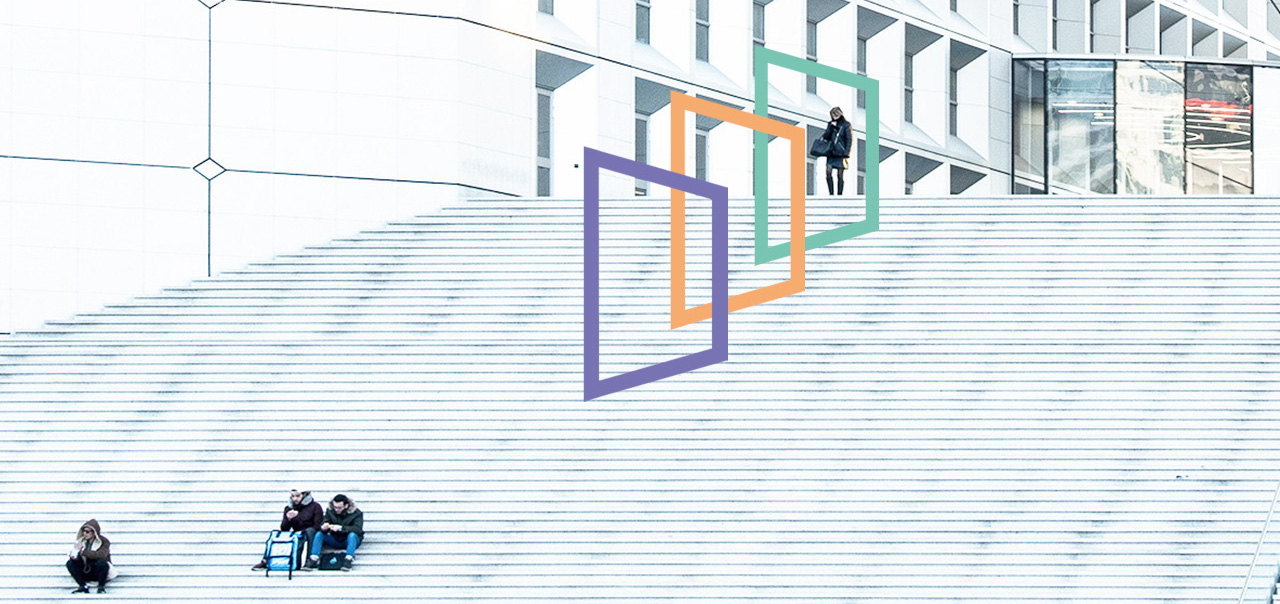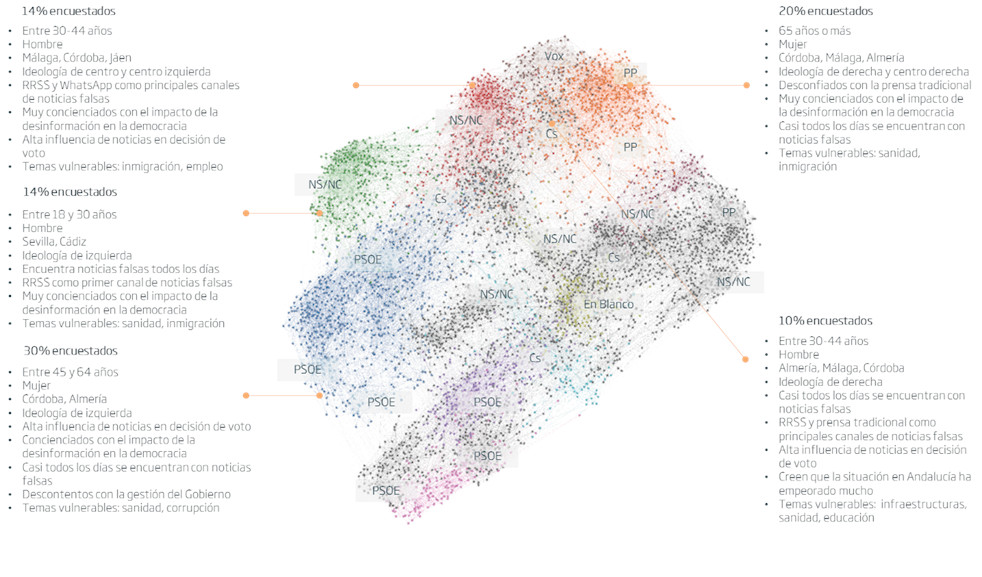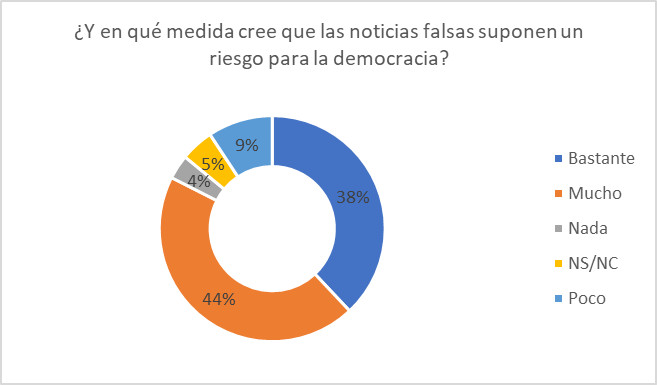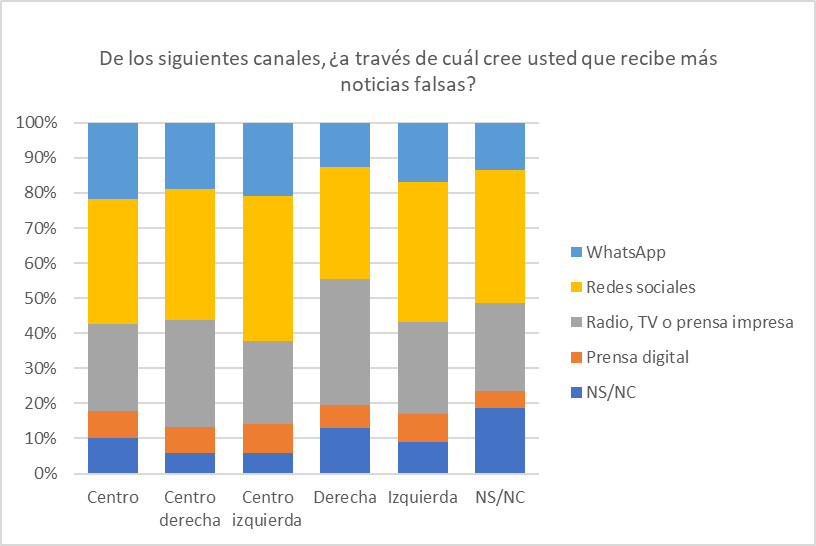
Are We Vulnerable to Disinformation?
The impact of misinformation in the last elections to the Andalusian Parliament in December 2018.
What is the profile of the voter most vulnerable to disinformation? It is a male between 30 and 44 years old, with a university education, dissatisfied with the government's management and pessimistic about the evolution of the situation in Andalusia since the 2015 regional elections.
This profile recognises that current news influences their voting decision and it is through Facebook where they consume more information about the campaign. They are aware that the channels through which they receive the most fake news are Social Networks and WhatsApp.

These are the conclusions drawn from a survey carried out by GAD3 during the two weeks prior to the election day on 2 December in Andalusia (2,500 surveys).
82% of those surveyed recognise that fake news poses a risk to democracy. As for the frequency with which they encounter such news, 73% of those surveyed say that they encounter this type of news almost every day. This is particularly relevant as 63% are influenced by current news when deciding how to vote.

The perception of the impact of fake news on democracy is similar among respondents who are ideologically left, centre and right.
However, 52.49% of left-wing respondents say they encounter fake news every day, 10 percentage points more than 44.88% of right-wing respondents.
In relation to information channels, respondents believe that they receive the highest volume of fake news via social networks and Whatsapp (55%). However, and contrary to what the Eurobarometer indicates for the European Union and Spain, it is noteworthy that in Andalusia there is more trust in the digital press than in the traditional media (radio, TV or printed press). 27.48% of those surveyed consider that they receive more fake news from traditional media compared to 7.06% who consider that they receive more from digital media. This is true for all age groups and ideologies.

Awareness of the impact of misinformation on democracy increases with level of education (87.2% of respondents with a university education, compared to 73.1% of respondents with primary education or less).
Already on Tuesday 27 November, the Spanish Minister of Culture and Sport, José Guirao, spoke at the EU Council of Ministers of Culture and Sport and stated that "in the face of this phenomenon, which is so complex to regulate and which borders on freedom of expression, we must bear in mind that disinformation has less power the more educated society is. Education and the development of critical capacity are very effective tools to neutralise the bombardment of 'fake news'.
With the aim of teaching students to detect fake news, the FAPE (Federation of Spanish Journalists' Associations) launched the initiative to teach journalism in Compulsory Secondary Education. This type of study is also recommended by the European Union.
Undoubtedly, fake news is a challenge for education in the 21st century. If there is something real about them, it is that they are not going to disappear, so working on digital education and critical thinking among citizens will be crucial to neutralise the impact of disinformation in areas that endanger democracy.










Add comment